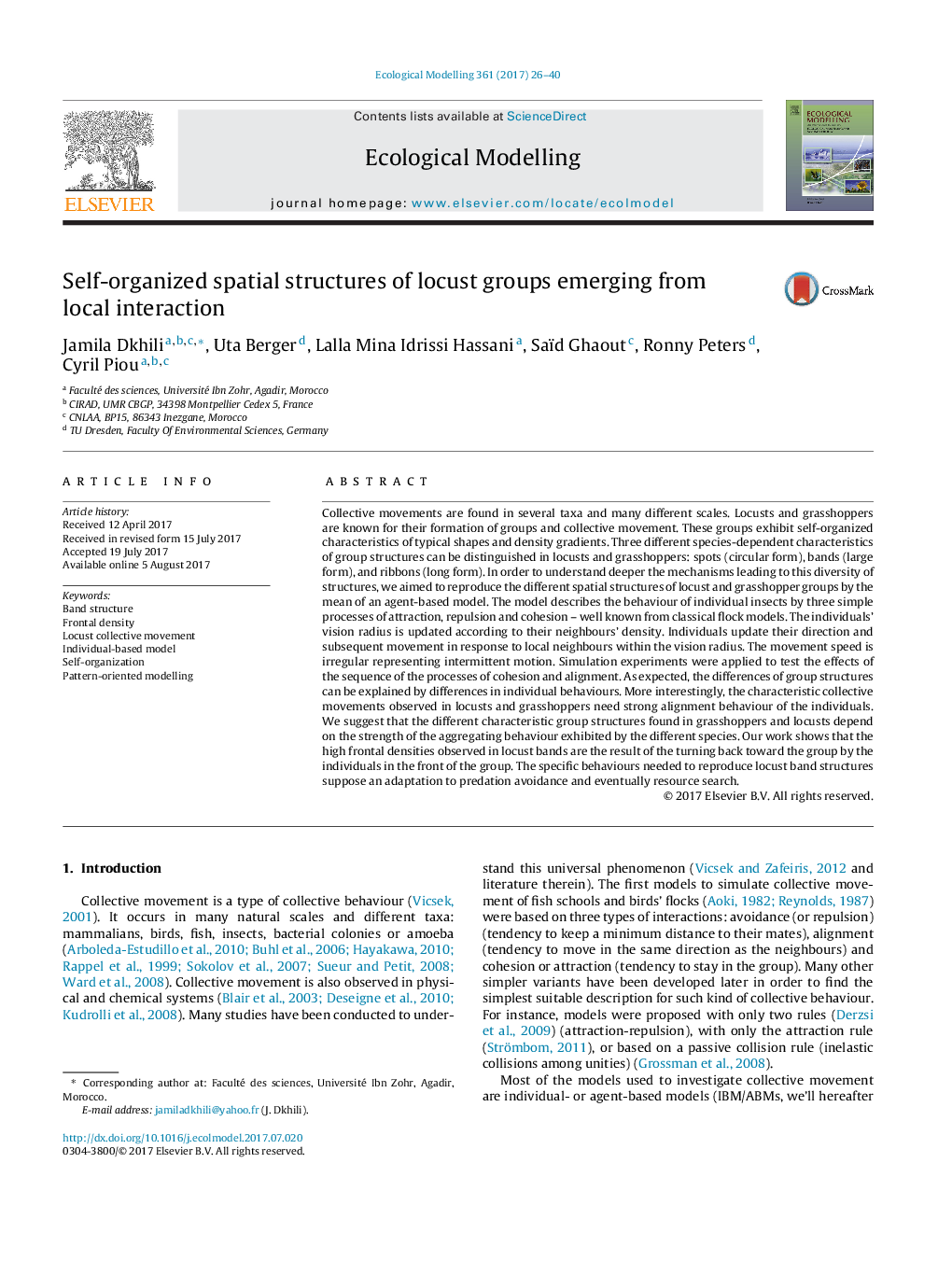| کد مقاله | کد نشریه | سال انتشار | مقاله انگلیسی | نسخه تمام متن |
|---|---|---|---|---|
| 5741992 | 1617386 | 2017 | 15 صفحه PDF | دانلود رایگان |
- Grasshoppers and locusts present collective movement with three group structures.
- An agent-based model with attraction, repulsion and cohesion rules was explored.
- A pattern-oriented modeling approach was used to reproduce these group structures.
- Different group structures is a result of different individuals behavior.
- Collective movement observed in locusts and grasshoppers need strong alignment.
Collective movements are found in several taxa and many different scales. Locusts and grasshoppers are known for their formation of groups and collective movement. These groups exhibit self-organized characteristics of typical shapes and density gradients. Three different species-dependent characteristics of group structures can be distinguished in locusts and grasshoppers: spots (circular form), bands (large form), and ribbons (long form). In order to understand deeper the mechanisms leading to this diversity of structures, we aimed to reproduce the different spatial structures of locust and grasshopper groups by the mean of an agent-based model. The model describes the behaviour of individual insects by three simple processes of attraction, repulsion and cohesion - well known from classical flock models. The individuals' vision radius is updated according to their neighbours' density. Individuals update their direction and subsequent movement in response to local neighbours within the vision radius. The movement speed is irregular representing intermittent motion. Simulation experiments were applied to test the effects of the sequence of the processes of cohesion and alignment. As expected, the differences of group structures can be explained by differences in individual behaviours. More interestingly, the characteristic collective movements observed in locusts and grasshoppers need strong alignment behaviour of the individuals. We suggest that the different characteristic group structures found in grasshoppers and locusts depend on the strength of the aggregating behaviour exhibited by the different species. Our work shows that the high frontal densities observed in locust bands are the result of the turning back toward the group by the individuals in the front of the group. The specific behaviours needed to reproduce locust band structures suppose an adaptation to predation avoidance and eventually resource search.
Journal: Ecological Modelling - Volume 361, 10 October 2017, Pages 26-40
